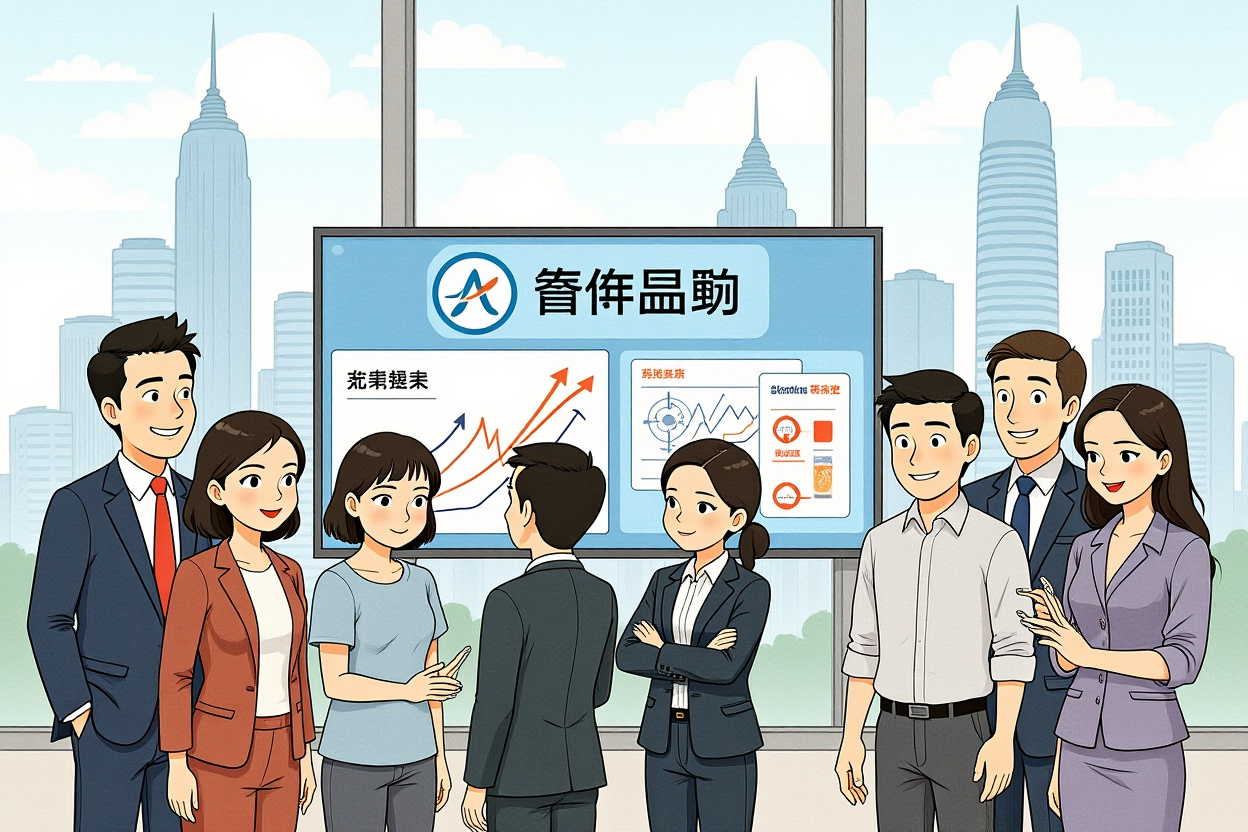– Two major A-share companies, 华东科技 (East China Technology) and 北方工业 (North Industry), announced significant acquisitions on the same day, reflecting heightened M&A activity in China’s equity markets.
– The deals are poised to drive sector consolidation and offer insights into evolving regulatory frameworks under 中国证监会 (China Securities Regulatory Commission).
– Investors should assess short-term volatility and long-term growth potential, with these acquisitions serving as bellwethers for market trends.
– Expert analysis suggests increased scrutiny from 国务院 (State Council) could shape future deal-making, emphasizing the need for due diligence.
– Global comparisons reveal unique characteristics of Chinese acquisitions, providing actionable intelligence for international portfolios.
The Chinese equity markets witnessed a notable event as two A-share companies unveiled major acquisition plans simultaneously, underscoring a strategic shift in corporate expansion strategies. This dual announcement highlights the increasing momentum in merger and acquisition activities within 上海证券交易所 (Shanghai Stock Exchange) and 深圳证券交易所 (Shenzhen Stock Exchange). For institutional investors, such moves signal potential opportunities in sectors like technology and manufacturing, where consolidation can enhance market efficiency. The focus on acquisition strategies is critical, as it aligns with broader economic policies aimed at boosting domestic innovation and global competitiveness. Understanding these developments is essential for navigating the complexities of Chinese equities, where regulatory nuances and market dynamics interplay.
The Dual Acquisition Announcements: A Market Overview
The simultaneous disclosure of acquisitions by 华东科技 (East China Technology) and 北方工业 (North Industry) has captured market attention, with both deals valued at over 1 billion 人民币 (Renminbi). This acquisition spree reflects a trend of companies leveraging strong cash reserves to diversify assets and mitigate risks amid economic uncertainties.
Details of the Deals and Their Strategic Rationale
华东科技 (East China Technology), a leader in 半导体 (semiconductor) manufacturing, announced its acquisition of a smaller rival, 创新微电子 (Innovation Microelectronics), aiming to consolidate market share. Key data points include:
– Deal size: Approximately 1.5 billion 人民币 (Renminbi), funded through a mix of cash and stock.
– Expected synergies: Cost savings of 20% within two years, enhancing profitability.
北方工业 (North Industry), focused on 重型机械 (heavy machinery), acquired 绿色能源科技 (Green Energy Tech) to enter the renewable energy sector. This acquisition is strategic, as it aligns with 中国政府 (Chinese government) initiatives like 双碳目标 (dual-carbon goals).
These moves demonstrate how acquisition strategies are being used to adapt to policy shifts, with both companies citing regulatory support from 国家发改委 (National Development and Reform Commission) as a key enabler.
Regulatory Framework Governing A-Share Acquisitions
The acquisition announcements occur within a tightly regulated environment, where 中国证监会 (China Securities Regulatory Commission) plays a pivotal role in overseeing M&A activities. Recent guidelines have streamlined approval processes, reducing timelines from months to weeks for compliant deals.
Key Policies from 中国证监会 (CSRC) and Their Implications
Under the leadership of 易会满 (Yi Huiman), 中国证监会 (CSRC) has emphasized transparency, requiring detailed disclosures for acquisitions exceeding 500 million 人民币 (Renminbi). For instance, the 上市公司重大资产重组管理办法 (Measures for the Administration of Major Asset Reorganization of Listed Companies) mandates:
– Independent third-party valuations to prevent overpricing.
– Shareholder approval for deals impacting more than 50% of company assets.
These regulations ensure that acquisition activities are aligned with market stability, reducing risks for investors. Data from 2023 shows a 15% increase in approved acquisitions, indicating regulatory encouragement for strategic consolidation.
Impact on Investor Portfolios and Market Sentiment
The dual acquisition announcements have immediate implications for investor portfolios, particularly in sectors targeted by the deals. Historical data suggests that similar acquisitions have led to an average stock price increase of 8% within three months post-announcement.
Short-Term Volatility Versus Long-Term Growth Prospects
In the short term, market reactions may include volatility, as seen with 华东科技 (East China Technology)’s stock rising 5% on the news, while 北方工业 (North Industry) experienced a slight dip due to integration concerns. However, long-term benefits are substantial:
– Enhanced competitive positioning: Acquisitions often lead to economies of scale.
– Diversification: Reduces reliance on single revenue streams, mitigating sector-specific risks.
Investors should monitor 沪深300指数 (CSI 300 Index) movements, as these acquisitions could influence broader market trends. Quotes from 高盛 (Goldman Sachs) analyst 张宇 (Zhang Yu) highlight, ‘These acquisitions underscore a maturation of Chinese markets, offering yield opportunities for global funds.’
Comparative Analysis with Global M&A Trends
Chinese acquisition strategies differ from global peers, particularly in regulatory oversight and strategic objectives. While U.S. markets often focus on tech-driven acquisitions, Chinese deals frequently align with national policies like 中国制造2025 (Made in China 2025).
How Chinese Acquisitions Stack Up Against International Norms
Data from 彭博 (Bloomberg) indicates that Chinese M&A volume grew by 12% in 2023, compared to a global average of 5%. Key distinctions include:
– Higher involvement of 国有企业 (state-owned enterprises) in acquisitions, ensuring policy alignment.
– Emphasis on domestic targets, with cross-border deals facing stricter scrutiny from 国家外汇管理局 (State Administration of Foreign Exchange).
This acquisition trend mirrors patterns in 日本 (Japan) and 德国 (Germany), where industrial consolidation has driven long-term growth. For example, 西门子 (Siemens) similar moves in Europe offer parallels for investors assessing Chinese equities.
Expert Insights and Future Outlook for A-Share Acquisitions
Industry experts predict that the acquisition wave will accelerate, driven by favorable policies and ample liquidity. 摩根士丹利 (Morgan Stanley) forecasts a 20% rise in M&A activity among A-share companies in 2024.
Quotes from 分析师 (Analysts) and Market Forecasts
李伟 (Li Wei), a senior analyst at 中金公司 (China International Capital Corporation), notes, ‘This acquisition signals a strategic pivot towards high-growth sectors, urging investors to rebalance portfolios.’ Additional insights include:
– Expect increased scrutiny from 国务院国资委 (State-owned Assets Supervision and Administration Commission) for large deals.
– Potential for follow-on acquisitions in 新能源汽车 (new energy vehicle) and 人工智能 (artificial intelligence) sectors.
Forward-looking guidance suggests monitoring 中国人民银行 (People’s Bank of China) monetary policies, as interest rate changes could impact financing for future acquisitions.
The simultaneous acquisition announcements by 华东科技 (East China Technology) and 北方工业 (North Industry) highlight a dynamic shift in China’s equity landscape, where strategic consolidation is becoming a cornerstone of growth. For investors, these moves offer a lens into regulatory trends and sectoral opportunities, emphasizing the importance of due diligence. As acquisition activities evolve, staying informed through resources like 上海证券交易所 (Shanghai Stock Exchange) disclosures will be crucial. We recommend consulting with financial advisors to leverage these insights for optimized portfolio adjustments in Chinese equities.




